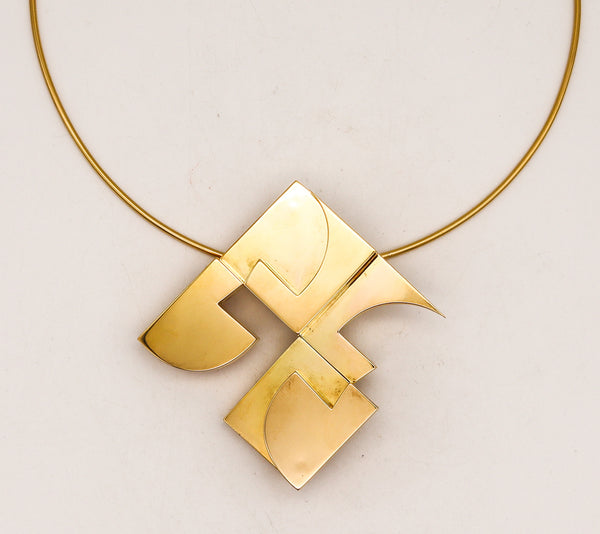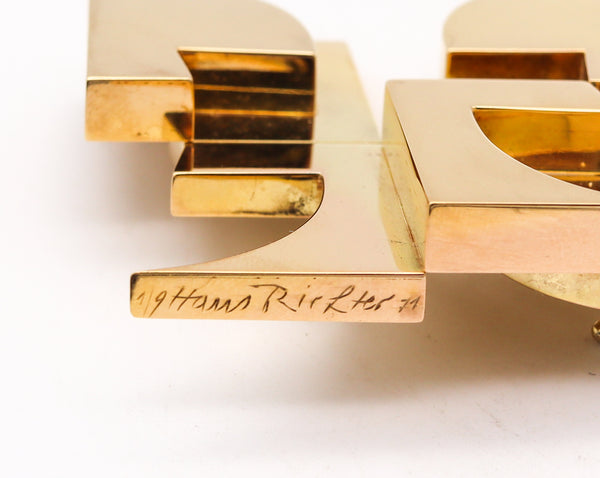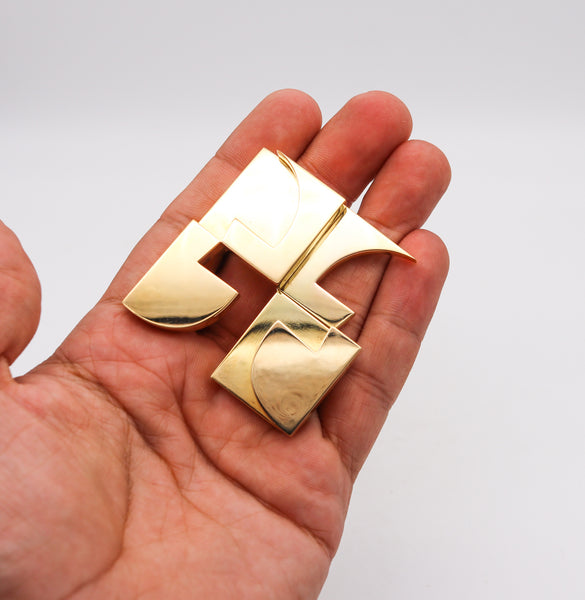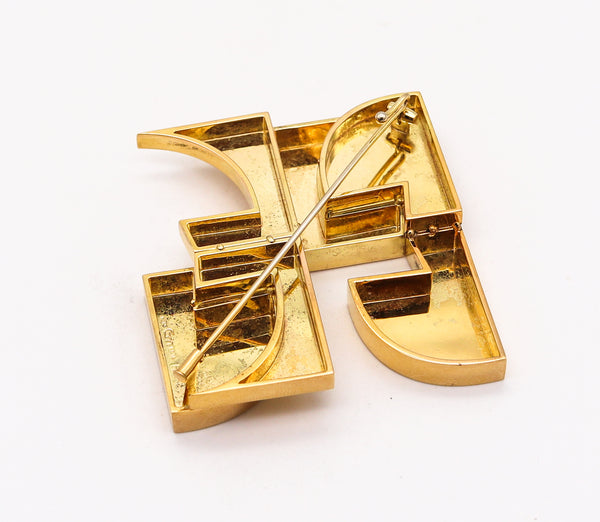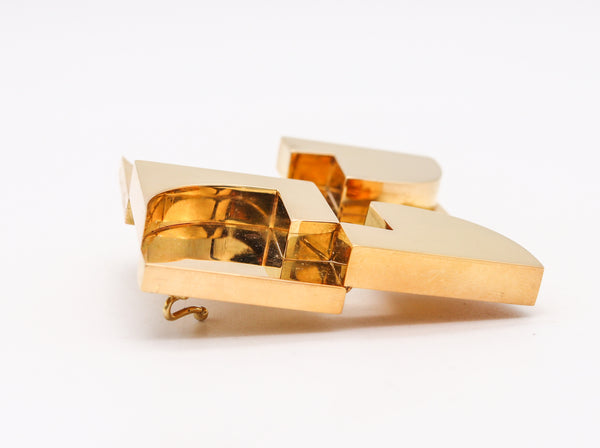Hans Richter 1971 Sculptural Dadaism Geometric Pendant Brooch In 18t Yellow Gold
Geometric pendant brooch designed by Hans Richter (1888-1976).
Very rare piece of wearable Dadaism art, created by the artist sculptor Hans Richter, back in the 1971. This piece is part of a limited edition of only 9 sculptures, carefully crafted with geometric squared and curved patterns in solid yellow gold of 18 karats with very high polished finish. Fitted at the reverse with a hinged pin bar to wear as a brooch and a curved bale to wear in a chain or necklace.
Weight: 66.7 Grams, (40.77 Dwt).
Measurements: 55 mm by 55 mm x 10 mm (2.16 x 2.16 x 0.39 Inches).
Hallmarks: Stamped with the maker's mark, the edition number, the editorial house and signed in script by artist., "HANS RICHTER 1/9 1971 .750 GM 18KT HR-1"
Hans Richter (1888-1976) was a German Dada painter, graphic artist, avant-garde film producer, and art historian. In 1965 he authored the book Dadaism about the history of the Dada movement. He was born in Berlin into a well-to-do family and died in Minusio, near Locarno, Switzerland. From Expressionism through Dadaism, Constructivism and Neoplasticism, he was one of the major figures of avant-garde art in the 1910s and 1920s and a catalyst for intellectuals and artists in many disciplines. Richter helped organise exhibitions which revived interest in Dada, both in the United States and Europe. In 1956 he made Dadascope, a film dedicated to Dada poetry.
Richter moved from Switzerland to the United States in 1940 and became an American citizen. Beginning in 1941 he taught at the Institute of Film Techniques at the City College of New York before taking over as director. While living in New York City, Richter directed two feature films, Dreams That Money Can Buy (1947) and 8 x 8: A Chess Sonata in 8 Movements (1957) in collaboration with Max Ernst, Jean Cocteau, Paul Bowles, Fernand Léger, Alexander Calder, Marcel Duchamp, and others, which was partially filmed on the lawn of his summer house in Southbury, Connecticut. In 1957, he finished a film entitled Dadascope with original poems and prose spoken by their creators: Hans Arp, Marcel Duchamp, Raoul Hausmann, Richard Huelsenbeck, and Kurt Schwitters. After 1958, Richter spent parts of the year in Ascona and Connecticut and returned to painting. Peggy Guggenheim organized his first solo show in the United States in which his large painted scrolls, inspired by the Second World War, featured prominently. In 1963, he directed the short film From the Circus to the Moon about the American artist Alexander Calder. In 1965, Richter was also the author of a first-hand account of the Dada movement titled Dada: Art and Anti-Art which also included his reflections on the emerging Neo-Dada artworks.
Note: Dadaism is a cultural and artistic movement created in order to counteract the arts, which emerged in 1916 at the Cabaret Voltaire in Zurich. It was proposed by Hugo Ball, writer of the first Dadaist texts; Later, the Romanian Tristan Tzara joined, who would become the emblem of Dadaism. A fundamental characteristic of Dadaism is the opposition to the concept of reason established by positivism. Dadaism was characterized by rebelling against literary conventions, and especially artistic ones, by making fun of the bourgeois artist and his art. His activity extends to a wide variety of artistic manifestations, from poetry to sculpture, through painting or music.
Note: From an authorized edition of only 9 pieces, this is the piece number 1, by Galleria GEM Montebello, Italy 1971.
Exhibitions: A piece of this design was exhibited in Jewelry as Sculpture as Jewelry, Institute of Contemporary Art, Boston, 1973.
Collateral: It is accompanied by a presentation jewelry box.
Condition: The overall condition of this piece is excellent. Beside the little normal wear, there is no damage to the gold. This piece has been carefully inspected to guarantee the condition and authenticity.
INVENTORY REF: P0000RNNM/1.528











